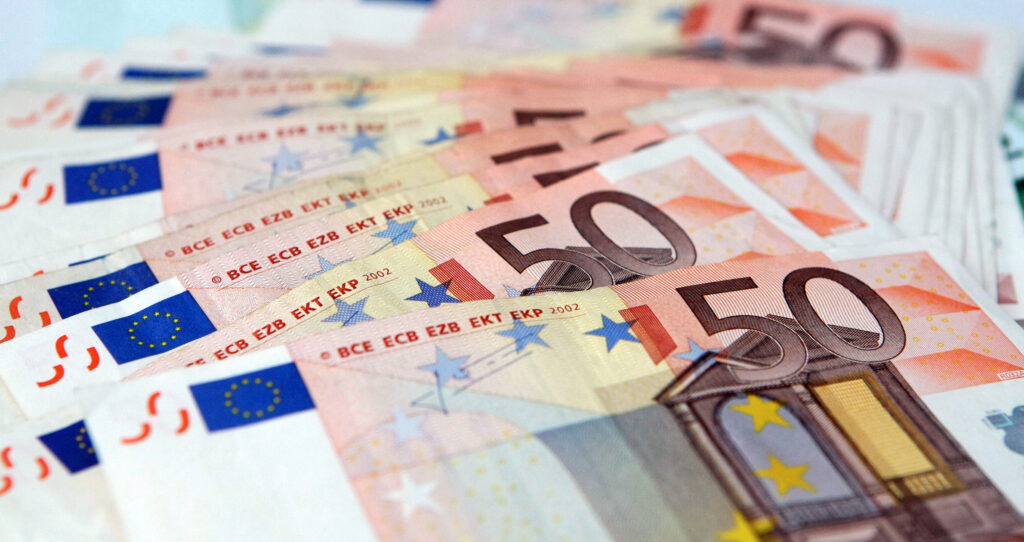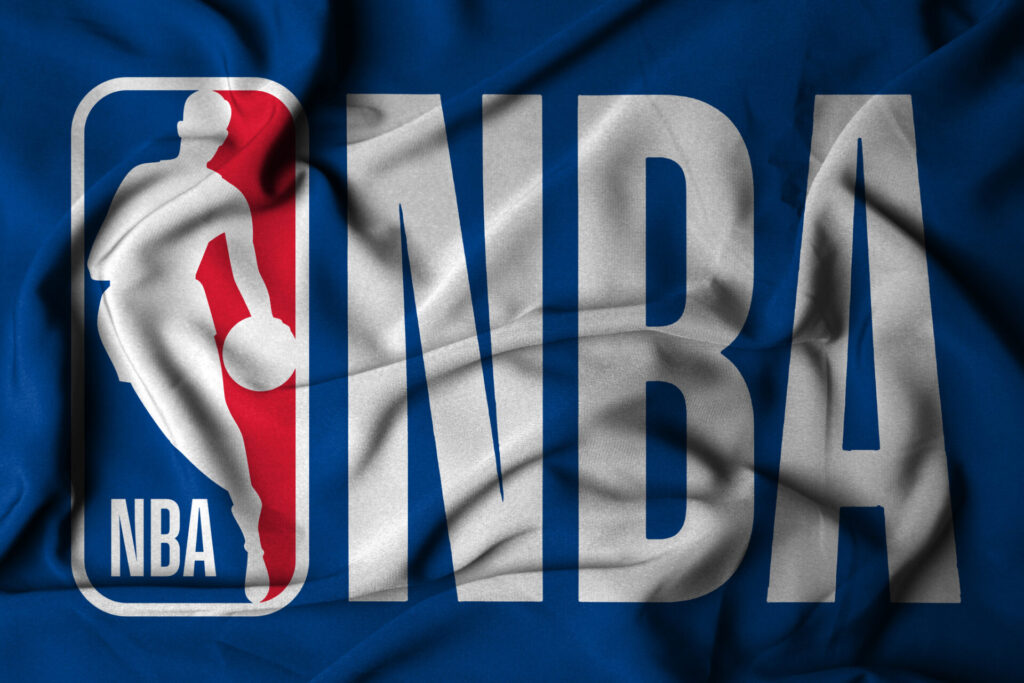The amount of a potential win on a sports bet depends entirely on the Betting odds off. We have explained the differences between the betting odds and reveal simple strategies for using them even more effectively!
Introduction to betting odds
Betting odds are an important parameter that you should know and understand if you want to place a bet. There are different types of odds, each of which can be read differently. First and foremost, it is simply important to understand how high your stake is, how likely your bet is to be successful and how high your potential payout is. Once you have understood these aspects, you can start placing your first bet. At the same time, however, you can also use the odds to develop a sophisticated strategy and get even more out of your betting slips. For example, the so-called Arbitrage bet which we will take a closer look at a little later.
But now to the basics: What exactly does the betting odds actually say? The odds of a bet indicate a value that can be used to calculate a potential win. You can use this value, which can be given as fractional or decimal odds, for example, to calculate how much you would receive in the event of a positive outcome before the competition. The higher this profit is, the less likely it is that you will actually be right with your prediction. This is due to the fact that Sports betting high-risk moves are rewarded more than low-risk moves. So if you bet on the favourite of a tournament, your winnings will be relatively small. This is already reflected in the betting odds. Now let's take a look at the types of betting odds that are used on the market!
Types of betting odds
Although betting odds always say the same thing - namely the amount of a potential win and the probability of winning - they can be written in different ways. We differentiate between three formats in which betting odds are typically found. We also look at the advantages and disadvantages of the different ways of writing them.
Decimal quotas
The Decimal rate is particularly common in Europe and is favoured by many players due to its easy readability. The odds offer a simple factor by which your own stake can be multiplied to calculate the potential payout.
Example: You place a bet for €10 on the FC Bayern Munich with odds of 1.5. If your bet is successful, you will receive a payout of €15, consisting of your deposit of €10 and a net profit of €5.
The decimal odds allow you to see at a glance how high a team's or player's chances of winning are. Small numbers indicate a high probability, while large numbers represent a low probability and therefore a high potential win.
Breakage rates
Another way of displaying odds can be found on many platforms in the UK: the Breakage rates. These can be recognised by the slash between two numbers. Many players find this type of odds difficult to read, as they are often not understood at first glance. Basically, the two values are the stake and the winnings. The fractional odds X/Y thus show which sum Y leads to which win X.
Example: You place a bet for €10 on the RB Leipzig with odds of 3/10. If your bet is successful, you will receive a payout of €13, consisting of your deposit of €10 and a net profit of €3.
Since only whole numbers are used for the fractional odds, you will not see odds that are written 3.5/1, for example - instead, 7/2 will be displayed. To calculate your winnings, simply add the two values together. If your stake is higher than the original value, you must of course convert the winnings. If you bet around €20 at odds of 3/10, you will now receive €26 instead of €13 if your bet pays off.
American odds
There are also American oddswhich are often referred to as money lines. These are marked with a plus or minus, which can be used to identify favourites and outsiders. The American spelling is a little more complicated, but can also be used easily with a little practice.
Plus: Odds where the converted decimal odds would be higher than 2.0 have a plus. These are therefore not the favourites, but usually teams in the midfield or underdogs. If there is a plus in front of the odds, the value indicates the potential net profit if €100 is wagered.
Example: If a bet of €10 is placed at odds of +240, the player will receive a total of €34 if they win. Since only a tenth of the €100 was wagered, the net winnings must also be divided by 10. So instead of € 240, this is € 24. Add to this the stake of €10 and you end up with €34.
Minus: If the sign is minus, the converted decimal odds would be less than 2.0. Only the favourites receive such low odds. In this case, the odds show how high the player's stake would have to be in order to make €100 net profit.
Example: At odds of -120, the player would have to place a bet of €120 to achieve a net profit of €100 and thus receive €220 in total. So if you bet €12 at these odds, you will receive a net profit of €10 and a total return of €22.
Understanding quota conversion
Even though decimal odds are used on most platforms in German-speaking countries, it is still helpful to understand the different types of odds and how to convert them. Now that we have explained the betting odds, let's take a look at how the Convert odds between the different formats works. With a few simple formulas, it's really easy!
An important conversion takes place between the fractional rate and the decimal rate.
Decimal ratio = (first number of the fractional ratio / second number of the fractional ratio) + 1
Example: The fractional quota is 3/10, so the calculation is (3/10) + 1 = 1.3. The decimal quota is 1.3.
American odds can also be converted into decimal odds. However, two different formulas are used depending on the positive or negative sign.
The positive quota applies:
Decimal quota = (American quota / 100) + 1
Example: The American quota is +240, so the calculation is (240/100) + 1 = 3.4. The decimal quota is 3.4.
The negative quota applies:
Decimal quota = (100 / American quota) + 1
Example: The American odds are -120, so the calculation is (100/120) + 1 = 1.83. The decimal odds are 1.83.
If you want to convert odds, you should focus primarily on the conversion to decimal format. Conversion to American odds or fractional odds is also possible, but it is less easy to draw conclusions about the probability of winning. For this reason, the conversion has little informative value.
Calculate potential profits
Once you have understood the different betting odds, you can easily calculate the potential profit of a bet. Of course, this is particularly easy if the odds are given to decimal places. Then the odds can simply be used as a multiplier.
Decimal odds x stake = total winnings
Total winnings - stake = net winnings (or net profit)
If you are playing with a fraction, you can use the above conversion formula and first calculate the decimal ratio and then use this as the multiplier. However, there is also the option of calculating directly with the fraction.
Reminder: The breakage rate consists of the net win / stake. For the conversion, you can therefore calculate the factor by which the stated stake must be multiplied in order to equal your own stake and then multiply this factor by the net winnings.
Example: The odds are 7/10, so you have to bet €10 to get €7 net profit. However, you want to bet €50. 50/10 = 5 and 7×5 = 35. The net profit would be €35 and you would receive a total of €85.
The decimal rate can now be calculated for verification purposes.
Decimal quota: (7/10) + 1 = 1,7
Total profit: 50×1,7 = 85
If you are playing with American odds, it is also advisable to convert to decimal odds. However, if your stake is €10, €100 or a multiple of this, the conversion can even be done in your head.
Reminder: With positive American odds, the number stands for the net profit that can be achieved with €100. If the American odds are negative, the number represents the stake that must be placed in order to achieve a net profit of €100.
Example: To calculate the net profit at odds of +140 with a stake of €10, simply divide the figure by 10. 140/10 = 14 €. The total win is €24.
An odds of -200 means that €200 must be bet in order to win €100 net. First, your own stake must be divided by the stake within the odds.
200/10 = 20
The €100 must then be multiplied by this value.
100/20 = 5
The net prize is €5, the total prize is €15.
Popular betting strategies with odds
The quotas can be set for different Betting strategies can be used. Every player has their own preferences. For example, do you only want to bet on favourites and slowly but steadily increase your stake through small wins? Do you have your eye on an up-and-coming underdog and want a high-risk bet? Betting that could potentially generate large profits? Your own betting strategy can of course also consist of a mixture of low-risk and high-risk bets. There are many different approaches that you can choose for your own personal tactics.
The betting strategy can also include, for example Combination bets which are somewhat more difficult, but also bring in larger winnings and can be boosted. A combination bet consists of at least three Tipsall of which must be successful. If one of the three tips loses, the other two are also invalid and the bet is lost. However, if you are right in three or more cases at the same time, there is reason to celebrate. Combination bets can be a way of betting on favourites and still winning. higher profits to collect. Of course, even with the Combination bet risky bets can be placed, but the chances of winning drop sharply here.
Another strategy is called Arbitrage bet. Such arbitrage bets are also known as "sure bets" or Safe bets is the term used. Here, the odds fluctuations of various bookmakers are used to make a profit in every case - regardless of the outcome of the competition. The aim is to exceed a payback value of 100% and thus make a (usually small) profit in every case. Arbitrage betting requires a relatively large amount of research in order to compare all possible bookmakers and their odds and discover the right combination.
Example: You bet with bookmaker A that team A will win a match, but with bookmaker B you bet on team B. You win once and lose once on both outcomes. Now you have to choose the bookmakers so that you make a profit after offsetting the loss and win. This works because the two bookmakers do not offer exactly the same odds. Finding such odds pairs is not always easy, but it is worthwhile.
FAQs on odds
Still have questions? Then you may find the answers here:
What are betting odds?
Betting odds help you to assess the chances of a team or sportsperson winning and tell you how much you would win with your stake.
What different types of betting odds are there?
There are many different types of betting odds, but the most important ones include Decimal quotas, Breakage rates and American odds.
Can quotas be converted into other types?
Yes, fractional odds and American odds can simply be converted into decimal odds.
What is the relationship between odds and the probability of winning?
The odds are set by the bookmaker depending on the probability of winning. However, as it is not possible to calculate an exact probability of winning - after all, the performance of the athletes also depends on the assessment of the experts - the odds of different bookmakers may differ.
What is the difference between positive and negative American odds?
Positive American odds are awarded from a decimal value of 2.0 and higher, negative American odds are awarded from a decimal value below 2.0.
How can I find out the favourite of a competition from the odds?
With decimal odds, it is particularly easy to identify the favourites. The smaller the odds, the greater the chances of winning. Fractional odds can be converted to find the decimal odds. With American odds, the minus sign in front of the number indicates the favourites.
How do arbitrage bets work and what role do odds play?
Arbitrage bets are placed with several bookmakers at the same time. Fluctuations in the odds offered are used to achieve a payback of more than 100%, regardless of the outcome of a tournament.
How do future odds work for long-term bets?
Long-term bets offer the opportunity to bet on the result weeks or months before an event. This usually involves the winner of an entire league or a major competition. If you place your bets early, you can often get better odds, as the winner is not so easy to predict.
What are odds boosts and how do they affect bets?
A boost can occur, for example, with a combination bet. As the combination bet involves a greater risk, the potential profit is increased.
How do you calculate the odds for a combination or future bet?
With the combination bet, the individual winnings are calculated first and then increased by the percentage of the boost. With Intertops for example, a 3-way combination is extended by a 5-% boost. This means you get an extra five per cent of the net winnings.
What is a push in betting and how does it affect the odds?
A push in betting means that a match has ended in a draw. Depending on the type of bet, your stake may be refunded or you may lose the bet. The push has no effect on the odds.
With this guide, you now have everything you need to Betting odds and place successful sports bets. Take advantage of the numerous Bonus offers and Promotions on Intertops and maximise your chances of winning!





















